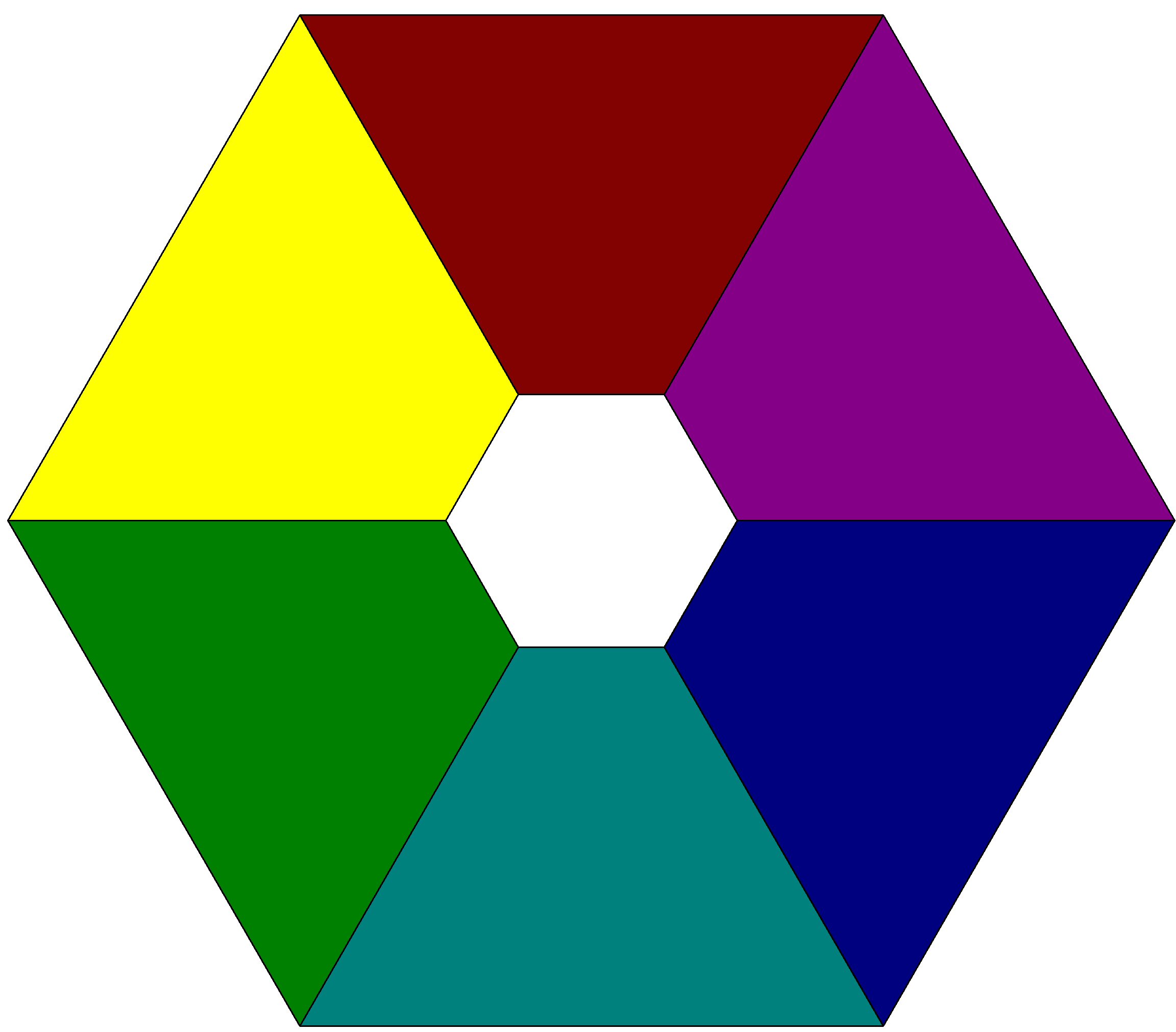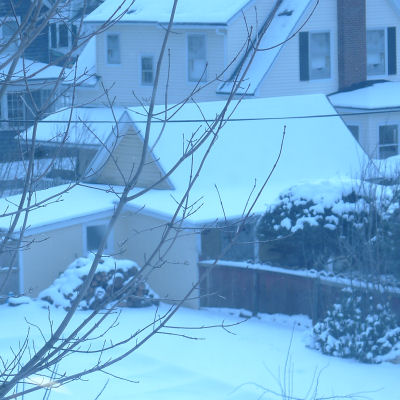|
The Visible Spectrum:
|
The range of electromagnetic radiation that is visible to the
human eye is called the visible spectrum, or "visible light".
Some colors discernable by humans are not contained in the visible spectrum;
these are created by mixing two or more different wavelengths. Colors consisting
of only one wavelength are referred to as "pure" colors. The degree of purity is
called "saturation" or "chroma".
The colors of the visible spectrum are violet, blue, green, yellow, orange, and red.
Because light travels in waves, it has both
frequency (the number
of waves that pass a given point in space during a specific time interval) and
wavelength (the distance between any two corresponding points on successive waves).
It's not crucial for you, as a designer, to know the frequency and wavelength of each
color, but we're going to tell you anyway:

|
|
Color
|
Frequency
|
Wavelength
|
|
Violet
|
668–789 THz
|
380–450 nm
|
|
Blue
|
606–668 THz
|
450–495 nm
|
|
Green
|
526–606 THz
|
495–570 nm
|
|
Yellow
|
508–526 THz
|
570–590 nm
|
|
Orange
|
484–508 THz
|
590–620 nm
|
|
Red
|
400–484 THz
|
620–750 nm
|
|
Image courtesy of Wikipedia Commons
|
|
Note that frequency and wavelength are inversely proportional.
The higher a color's frequency, the shorter will be its wavelength.
|
|
Color Mixing:
|
There are two ways to mix colors in lighting:
- Additive mixing
happens when two or more differently-colored lights are aimed
at the same surface.
- Subtractive mixing
happens when a single light source shines through
differently-colored filters. Each filter allows certain
colors to pass while blocking or absorbing other colors.
In additive mixing, primary colors
are those three colors which, when aimed at the same place
at the same intensity, theoretically form white light ("theoretically",
because in practice, this is limited by the imperfections
of color filters and light sources). These colors are red,
green, and blue.
The secondary colors in additive
mixing are those colors which can be created by evenly
mixing two primaries. These colors are:
- Cyan (blue and green)
- Magenta (blue and red)
- Amber (red and green. Really.)
Televisions and computer monitors create colors by using
additive mixing. For example:
This sentence is 100% red.
This sentence is 100% green.
This sentence is 50% red and 50% green (See? I told you).
In subtractive mixing, the primary colors are those which
can be created by evenly mixing two secondaries, as shown
in the drawing above. In the example on the right, a white
light is altered by inserting a cyan filter, which absorbs
the red part of the spectrum and passes (or "transmits")
blue and green light. The resulting cyan light is then
passed through a yellow filter. This filter absorbs blue
light, but transmits any red or green that may be present.
Since there is no red (because we've already blocked
it with the cyan filter) all that is transmitted is green.
Subtractive mixing is often found in
automated fixtures. The act of inserting a color filter in
front of a light is a very simple form of subtractive
mixing.
Complementary colors are
those colors directly across from each other on the
color wheel:
 For example: yellow and blue are complementary to each
other, as are green and magenta. As you can see, the
complementary of any primary color is the secondary color
formed by mixing the two remaining primaries.
Complementary colors, when combined additively on a neutral
surface, form (in theory) white light.
Complementary colors, when used adjacently, reinforce
each other; each makes the other appear to be more
vibrant.
For example: yellow and blue are complementary to each
other, as are green and magenta. As you can see, the
complementary of any primary color is the secondary color
formed by mixing the two remaining primaries.
Complementary colors, when combined additively on a neutral
surface, form (in theory) white light.
Complementary colors, when used adjacently, reinforce
each other; each makes the other appear to be more
vibrant.


One of the most difficult problems faced by young designers
is choosing color. The various manufacturers' swatchbooks
(usually available free from dealers or from the manufacturers)
offer literally thousands of possibilities.
How to choose? K.C. Hooper of Apollo Design Technology,
a leading manufacturer of theatrical color media, offered
these guidelines:
These are some of the major manufacturers of theatrical color media:
A very good discussion of the emotional impact of color
can be found here:
Color Theory for Designers, Part 1: The Meaning of Color
Jeff reminds you that the color wheel shown in the
above link is subtractive, for mixing paint, not additive, for mixing light.
|
|
|
"White" Light Isn't White –
Color Temperature:
|
"White" light exists mostly in theory; at any given time, the light we think of
as "white" is actually somewhere between a pale yellow and a pale blue.
This range is referred to as "color temperature".
It can best be demonstrated by setting the "white balance"
on a digital camera to "daylight" and taking a picture under incandescent
light. The resulting image will be slightly yellow, because incandescent
light is yellower – has a lower color temperature – than
does daylight. Likewise, setting the white balance to "tungsten" and
shooting a scene lit by daylight will yield a photo that is slightly bluish,
since daylight has a higher color temperature than does tungsten light.

|

|
For this photograph, the white balance
was set to
"daylight" (or "outdoor").
|
For this photograph, the white balance
was set to
"tungsten" (or "indoor").
|
Color temperature is measured in "degrees Kelvin," abbreviated as "K."
As mentioned above,
the bluer a light is, the higher its color temperature will be. Below
is a table of approximate color temperatures for common light sources:
|
Light Source
|
Color Temperature
|
|
Overcast Daylight
|
6500° K
|
|
Typical Daylight
|
5500°–6000° K
|
|
Theatre Lighting / Photofloods
|
3050°–3400° K
|
Standard Incandescent
Theatre Lighting
|
3000° K
|
Household Incandescent
Light Bulb
|
2700°–3300° K
|
|
Limelight
|
2400° K
|
|
Gaslight
|
2200° K
|
Sun at Sunrise
or Sunset
|
2000°–3000° K
|
|
Candle Flame
|
1850° K
|
|
Match Flame
|
1700° K
|
So what does this mean? From what are these numbers derived? The
temperature is referenced to that of a standard "black body" –
a block of carbon which, when heated to specific temperatures, emits
light of specific colors.
The Kelvin scale (named after British physicist William Kelvin) is a
variation of the Centigrade/Celsius scale, except that rather than its
being keyed to the freezing point of water, it is based on "absolute
zero". If you subtract 273 from a Kelvin temperature, you will have
its Celsius equivalent.
You may be thinking that none of the colors above looks like "white"....
and you're right. First of all, they are merely approximations and
not, as such, accurate. Secondly – and more important –
the eye (or, more accurately, the brain) adapts. We tend to automatically
"white balance" ourselves to the dominant light source in our environment
at any given time. If, for example, you spend a significant amount of
time outdoors during the daylight hours and then go into your house or
apartment, the interior lighting may look yellowish for several hours,
until your brain "white balances" to its new environment. This is
something you should remember, by the way, when you're writing the
first few cues of your show.
|
|